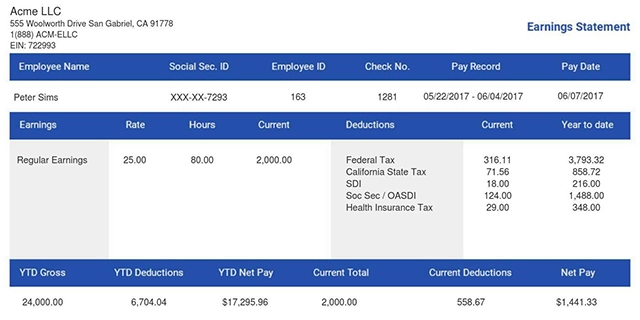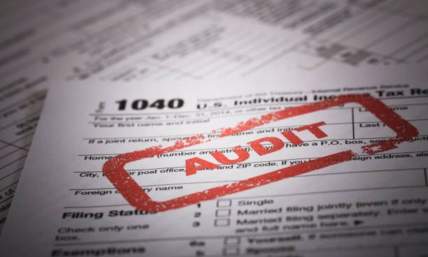What Is The Difference Between Forms 1009 and W2?
Among the thousands of documents that the Internal Revenue Service (IRS) uses to fulfil its mandate, two arguably get a lot of attention: Forms 1099 and W2. Both serve the purpose of reporting income and taxes withheld, but their differences go beyond having different names. Without an idea of their distinctions, you might find yourself under the IRS’s suspicious glare.
This comprehensive guide will delve deep into each form’s respective features and the right way to use them. It’s more intricate than you might think.
Self-Employed or Employee
Knowing the most significant distinction between a Form 1099 and the W 2 Form boils down to a straightforward question: ‘Are you self-employed or an employee?’
But as clear-cut as asking yourself this sounds, finding the answer isn’t. Not everyone working in an office can be considered an employee under common law, and not all working at home can be called freelancers or independent contractors. It’s so complicated that the IRS provides a separate form for employers or workers to determine worker status, known as Form SS-8.
Under common law, answering this question boils down to three categories of control.
-
Behavioral – the employer has the right to direct the worker’s tasks and responsibilities
-
Financial – the employer controls the worker’s financial aspects like wages and bonuses
-
Relationship – the employer and worker operate under the specifics of a contract
Fulfilling a condition in each category is unlikely to get you the correct answer. It’ll take several conditions checking out to determine where you stand in this employment spectrum. If you get it right after this, great; if not, pick up a Form SS-8 to help settle the matter.
On the matter of the correct form to file, self-employed individuals like freelancers should use Form 1099. Since the individuals themselves are their own employers, they’re responsible for filing these forms and ensuring accuracy.
As for employees as defined by common law, Form W2 is the correct document. Unlike filing a Form 1099, filing a Form W2 is the responsibility of the employer as mandated by the Current Tax Payment Act of 1943 (CTPA). The employer also has to mail copies of this form to their employees to assist with filing their income tax returns.
What if a person owns a business on top of their regular office work? The IRS says they can file both forms but respective of their sources of income. In this context, the person must report their income from their side venture in Form 1099 and office work in Form W2.
Also read: Do You Need Multiple W2 Forms From The Same Employer?

Form 1099 and Its Many Faces
The IRS maintains close to 24 different types of Form 1099, each for declaring income and taxes on particular situations. Nevertheless, all these documents are concerned with income that isn’t from wages or salaries. More importantly, you only get a Form 1099 when the income is at least USD$10 in interest or USD$600 in hard revenue.
While most taxpayers commonly file a few types, it pays to keep in mind that there’s a Form 1099 for almost every occasion. Here’s a near-exhaustive list.
-
1099-A –For properties that were abandoned or foreclosed
-
1099-B –For income from stocks, securities, and cryptocurrencies
-
1099-C –For a debt of at least USD$600 canceled in a tax year
-
1099-CAP – For shareholders receiving cash or stock due to capital structure changes
-
1099-DIV – For interest or income from shares in a liquidated company
-
1099-G – For reporting compensation from government programs (i.e., CARES Act)
-
1099-H – For when you made advanced payments to your health insurance premiums
-
1099-INT – For income as interest from savings or checking accounts in a tax year
-
1099-K – For businesses making revenue from credit or debit card transactions
-
1099-LS – For income from selling a life insurance policy
-
1099-LTC – For payments received as a result of long-term care or death benefits
-
1099-MISC – For nearly every form of income from being self-employed
-
1099-NEC – For income earned outside of W2 salaries
-
1099-OID – For purchasing a bond at lower than face value
-
1099-PATR – For farmers who’re members of a cooperative or selling their crops to one
-
1099-Q – For money withdrawn from a 529 college savings plan
-
1099-QA – For income received from an Achieving a Better Life Experience account
-
1099-R – For income derived from retirement accounts (e.g., IRA, 401(k))
-
1099-S – For income from selling a home or any form of real estate
-
1099-SA – For using money in a health savings account
-
1099-SB – For a seller’s investment in a life insurance policy before selling it
-
RRB-1099 – For retirement benefits received by railroad workers
-
SSA-1099 – For receiving Social Security benefits
To put this into perspective, Form W2 variations are only a matter of where the taxpayer resides. People living in the 50 states and Washington, D.C. use the standard W2, while those living in inhabited U.S. territories use W2 forms with a specified two-letter code (Puerto Rico’s W2 form is known as a Form 499R-2/W-2PR). There’s also Form W-2C for making corrections to a W2 form filed recently.
Also read: Getting A Copy Of A Prior Year W2 Form

Single Issuer for W2
The beauty of a W2 resides in the fact that there’s only one issuer: the employer. As mentioned earlier, employers are responsible for reporting and filing withholding taxes under the CTPA. In fact, lawmakers conceived this legislation to streamline the collection of finances while the U.S. was fighting in World War II.
The employer is responsible for sending a copy of the W2 to both the employee and the IRS. The information declared in the document will help taxpayers file their tax returns in their Form 1040 later in the year. It’ll determine whether they’ll get a refund or owe more taxes. If you don’t get your copy by at least the first week of February, you can coordinate with your employer.
The same can’t be said for Form 1099, not only because of the lack of a registered employer. The myriad of variants stated previously means specific forms can come from various issuers.
Below are several examples.
-
Independent contractors issue Forms 1099-A and 1099-B
-
The company undergoing change issues Form 1099-CAP
-
The Railroad Retirement Board (RRB) issues Form RRB-1099
-
The Social Security Administration (SSA) issues Form SSA-1099
In most situations, the payer is responsible for issuing the form alongside the payment. Among freelancing services, 1099-MISC and 1099-NEC come up the most (1099-MISC used to serve both functions until 2020). If you’re a freelancer or independent contractor, it makes sense to ask one from your clients, right?
Unlike W2, producing a Form 1099 is rarely required—and asking the payer to file one can do more harm than good. Experts say there’s the risk that the payer might fill the form incorrectly. Keep in mind that the payer also has to file the form with the IRS, so if you end up receiving and filing the form you requested, the IRS may flag your income as doubled.
It’s also worth noting that this instance only applies between the independent contractor and the payer. The IRS will require some 1099 forms, like 1099-R.
Also read: A Full Breakdown of W2 And 1099 Filing Specifications
Worker Misclassification Is Serious
With the ongoing pandemic driving the workforce to work from home, ensuring the right worker status is more crucial than ever. While some remain with their pre-COVID employers, a growing number of Americans are taking up freelancing work. Whereas office work declined, freelancing shares went up to 36% in the first year of the pandemic from 28% in 2019.
When an employer wrongly classifies a worker as either an employee or independent contractor, the entire country loses out on potential revenue. A study in 2006 found that the government lost an estimated USD$2.72 billion in revenue for the misclassification of independent contractors. An earlier study in 1984 estimated the loss at USD$1.6 billion for employees.
A more apparent downside of worker misclassification is the distribution of benefits. A regular employee wrongly considered as a freelancer may lose out on worker benefits like health plans, retirement plans, and others. With COVID still running rampant across the country, nobody wants to be caught without adequate and low-cost access to healthcare.
The IRS doesn’t take this issue lightly, which is why it has a mechanism for determining those who should file a W2 or 1099 form. Of course, correct filing on the taxpayers’ part is just a part of the overall solution. The federal and state governments are coming up with measures to curb worker misclassification and its effects on the economy.

Conclusion
Despite sharing the purpose of declaring income and withheld taxes, 1099 and W2 forms cater to distinct groups of taxpayers. Freelancers and independent contractors are more concerned with Form 1099, while those employed under common law should file a Form W2.
Both documents have their respective pros and cons. Form 1099 has countless variants that cater to a particular situation, but people who need it when the deadline comes might not receive it. On the other hand, Form W2 comes from the employer but comes with a higher risk of an erroneous declaration of figures.
Regardless of these aspects, everyone should know the correct tax form to file. If not, the entire country loses.
When it comes to Forms 1009 and W2 it is also worth noting that employers need to understand how to fill in various tax forms and which particular documents to submit. Having these files in order will allow their payroll to run smoother and ensure employees will receive the correct pay stubs.















